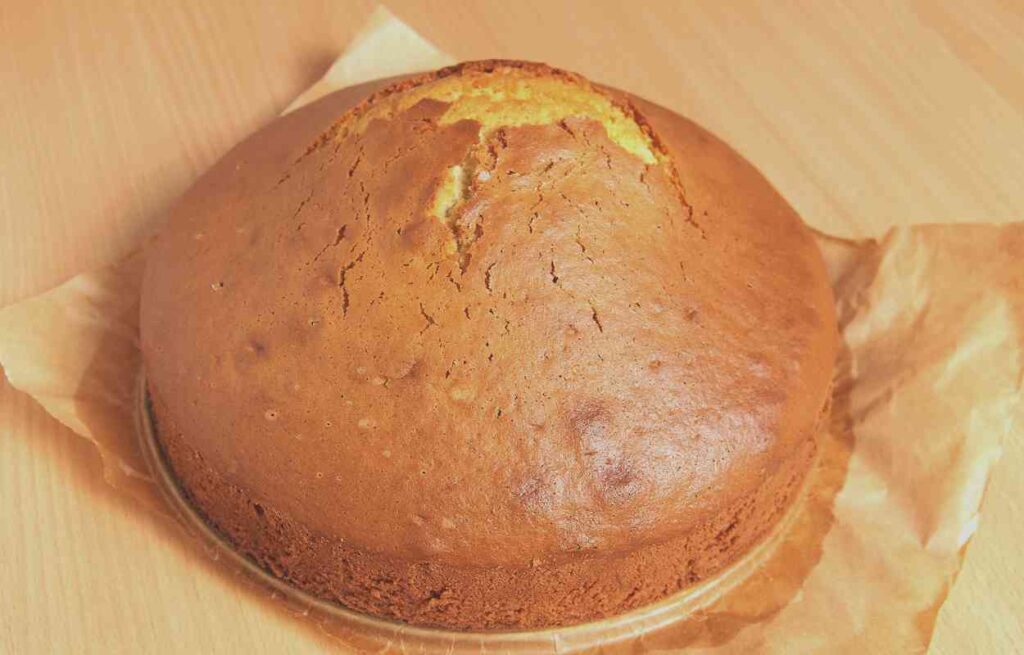Why Do My Cakes Burn on the Bottom?
Burning the bottom of a cake can be a stressful problem that many bakers have to deal with. Even though making a properly baked cake may seem easy, there are many things that can cause the bottom of the cake to burn. But, why do my cakes burn on the bottom?
Cakes that are burning on the bottom can be caused by a number of things, including an oven that is too hot, the cake pan is too close to the bottom of the oven, the cake batter being too thick, or not using a greased and floured cake pan.
It is important to use an oven thermometer to check the oven’s real temperature and make sure it is properly preheated. Even after being calibrated, ovens may still have different temperatures.
Also, putting the cake in the oven in the wrong place, like too close to the heating element, can make the heat spread unevenly and cause the bottom to burn. This problem can be fixed by paying close attention to the temperature and where to put the cakes so that they bake properly and taste great.

Why Do My Cakes Burn on the Bottom?
If your cake is turning out excessively brown on the bottom, this also causes the cake to burn on the bottom, and it’s most likely due to an overheated oven.
Reduce the temperature by 25 degrees and see if it makes a difference. If the cake is still too brown, try covering the bottom of the pan with foil to prevent it from browning anymore.
Check the accuracy of your oven thermometer to ensure it is properly calibrated. Finally, make sure you’re using an oven-safe pan that’s the right size for the dish.
There are a few reasons why your baked items are burning on the bottom. The most typical culprit is an excessively high oven temperature. Check the temperature of your oven with an oven thermometer to ensure it is accurate. If it is too high, make the necessary adjustments.
Another option is that the baking dish is too small for the recipe. Choosing the right baking pan is also important for effectively baking the cake. Also, position the baking pan in the center of the oven to let heat circulate evenly.
What Causes Cake to Burn on Bottom?
There are several possible causes for the bottom of your cakes to be burned. If you’re having this issue with your cakes, there are a few things you may attempt to fix it.
Heat dispersion is the most critical factor. Your cakes will burn if your oven cooks unevenly, as the bottom heats up and dries out while the top remains moist. You could possibly be baking at too high a temperature or leaving your cakes in the oven for too long (this can happen if you believe that a toothpick inserted into the cake will come out clean).
Another reason for burnt bottom cakes is adding too much butter or oil in the recipe. If your cakes are constantly overly greasy, consider cutting back on the butter or oil the next time.
Furthermore, if you open the oven door too frequently while the cake is baking, you are allowing heat to escape and causing the cake to get overcooked on the bottom.
How to Prevent Cakes from Burning on the Bottom?
Preheating your oven to the correct temperature and using an oven thermometer to ensure accuracy will keep the cakes from burning on the bottom.
Before pouring the batter into the baking pan, make sure it is flat and level. Check the temperature of your oven to ensure it is set appropriately. Try not to open the oven door while the cake is baking, since this can allow heat to escape and create uneven cooking.
If your cake is still burning on the bottom after ensuring that the oven temperature is correct, it could be due to expired baking powder. Baking powder loses its strength with time, so if it’s been more than a few months, it’s time to replace it.
Why Do Cakes Burn on Top?
It’s a frequent confectioner’s issue: your lovely cake tastes delicious, but the top is usually scorched. Here, we’ll explain why this happens and what you can do to avoid it.
Uneven cooking temperature, oven drafts, and the type of pan used are the three most common causes of cakes burning on the top. Check that your cake is at the correct temperature and that your oven is properly preheated. If the temperature is too high, the cake will cook too quickly and burn on top.
This post will go over why cakes burn on top, how to keep your cakes from burning on top, and anything else you need to know about the subject.
How to Keep the Top of a Cake from Burning?
If the top of your cake is browning and burning too soon, try protecting it by putting a piece of foil or baking paper over the top of the tin. This will take away some of the heat from the oven. Be careful if you use this method too early in a recipe, as it could stop the cake from rising the right way.
Cover your cake with aluminum foil to keep it from burning on top. You can make a foil tent to keep the cake from touching the top. After that, you can cut the top of the cake into a uniform shape. This procedure is applicable to both standard and specialty cakes.
If you don’t want to use aluminum foil, use parchment paper or plastic wrap instead. Shielding your cake from the heat is a technique that is frequently taught in cake decorating schools and utilized when baking decorative cakes.
To achieve consistent cooking, position the cake near the bottom or in the center of the oven. The top of your cake should not contact the oven gate, and any baking tins should be placed carefully in the oven.
How Do You Restore a Burned Cake?
You can repair a burnt cake after it comes out of the oven. Frost the cake and place it in the freezer overnight. The icing will form an insulating coating, locking in temperature and preventing the cake from thawing while you are doing other things. Here are some suggestions for repairing a burnt cake:
Begin by removing the burnt edges of the cake. Add more butter if the cake is too dry. Consider making a trifle out of the cake. After that, add the toppings, icing, and frosting.
You can also freeze the cake and re-freeze it as needed. You can also cut the cake into mini-cubes.
Why Your Cake Has a Hard Crust?
Dry or tough-crusted cakes can be caused by over-ripened eggs, over-beating egg whites, or over-mixing. If the batter is tough to spread in the pan, you’ve probably overbeaten it.
Overmixing your flour could be the cause of a difficult cake. Flour is the foundation of baked foods because it provides structure. When flour and liquid are mixed together, the protein (gluten) in the flour begins to expand.
A hard crust can be caused by a variety of factors, including over-greased pans and excessive butter. Sometimes it’s just the pan you’re using. It’s sometimes a matter of butter and flour. Overbaked cakes can also acquire a crust. Using the perfect pan for your recipe, as well as baking time and temperature, is critical.
What Is the Best Way to Soften Cake Crust?
It is necessary to bring equal parts water and sugar to a boil and then allow the mixture to cool. Brush off the syrup in the cake after piercing several sots with a fork. After applying the sugar syrup, cover the cake with aluminum foil or plastic wrap to allow the moisture to soften the cake. Here are some suggestions for softening the cake crust.
The first and most important advice for softening your cake crust is to not overbake your cake. After baking, the use of sugar makes your cakes moist and very soft.
If you want your cake to be moist and soft, replace the butter in the recipe with a fruit puree such as apple sauce. Placing syrup directly on a cake will add moisture and soften it.
Wrapping your cake is another method for keeping it soft and moist. To keep your cake fresh and soft, wrap it in plastic wrap and cover it with plastic wrap.
How Can I Tell If My Cake Is Overbaked?
Make sure your cake is finished before removing it from the oven. This simple test will tell you when your cake is done. To do so, place a spatula between the cake’s center and outside edge. Then, straight up with the spatula. If the crumb does not adhere to it, the cake is done baking. If it does stick to it, bake the cake for additional 5-10 minutes before attempting again.
Conclusion
There are two possible explanations for this: your oven is too hot or you are not using a pan with a good heat conductor. You should be able to enjoy properly cooked cakes from now on if you use an oven thermometer and a pan with a good heat conductor.
Nothing is more disheartening and irritating than spending time baking a cake only to learn that it tastes bad or is scorched. To avoid overbaking a cake, reduce the temperature to 15-20 degrees F before placing a sheet pan or baking dish in the oven, and then turn the oven off 10-15 minutes later to enable it to cool while baking.
Contents
- Why Do My Cakes Burn on the Bottom?
- What Causes Cake to Burn on Bottom?
- How to Prevent Cakes from Burning on the Bottom?
- Why Do Cakes Burn on Top?
- How to Keep the Top of a Cake from Burning?
- How Do You Restore a Burned Cake?
- Why Your Cake Has a Hard Crust?
- What Is the Best Way to Soften Cake Crust?
- How Can I Tell If My Cake Is Overbaked?
- Conclusion
